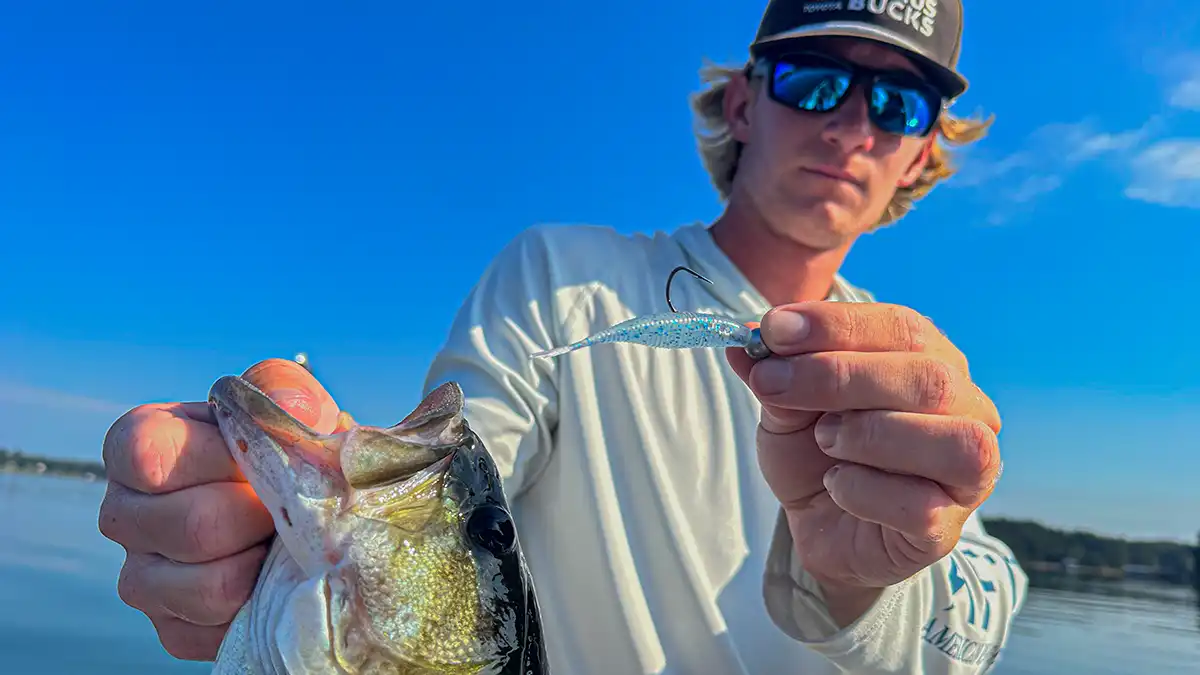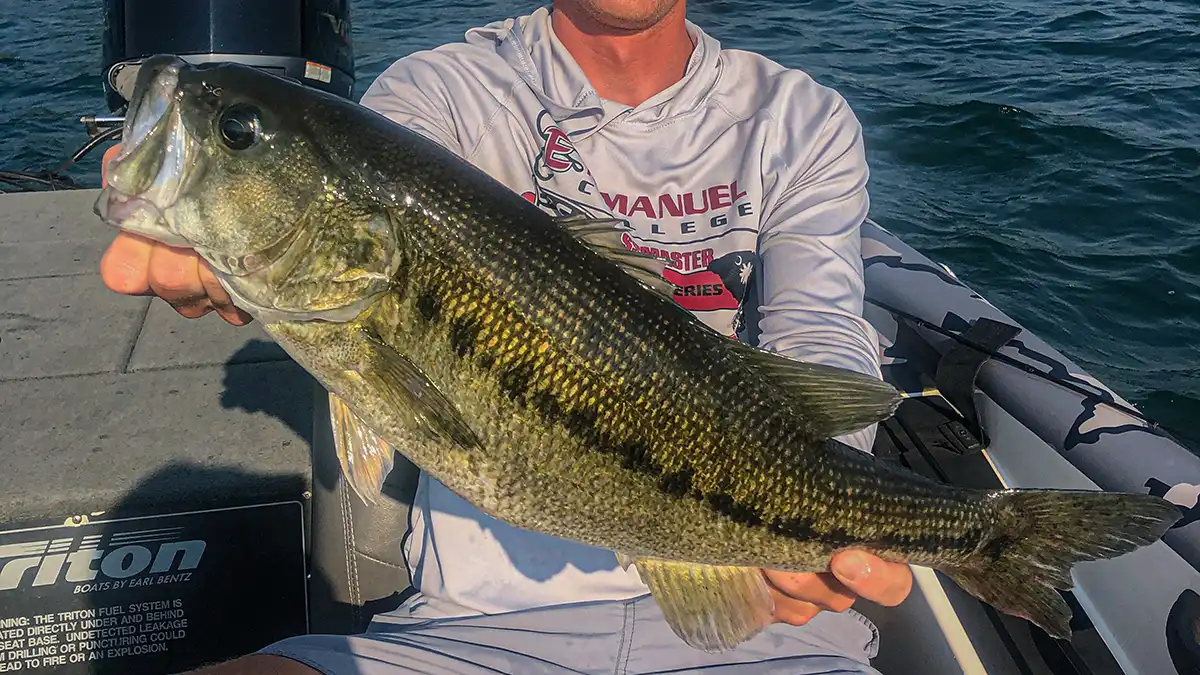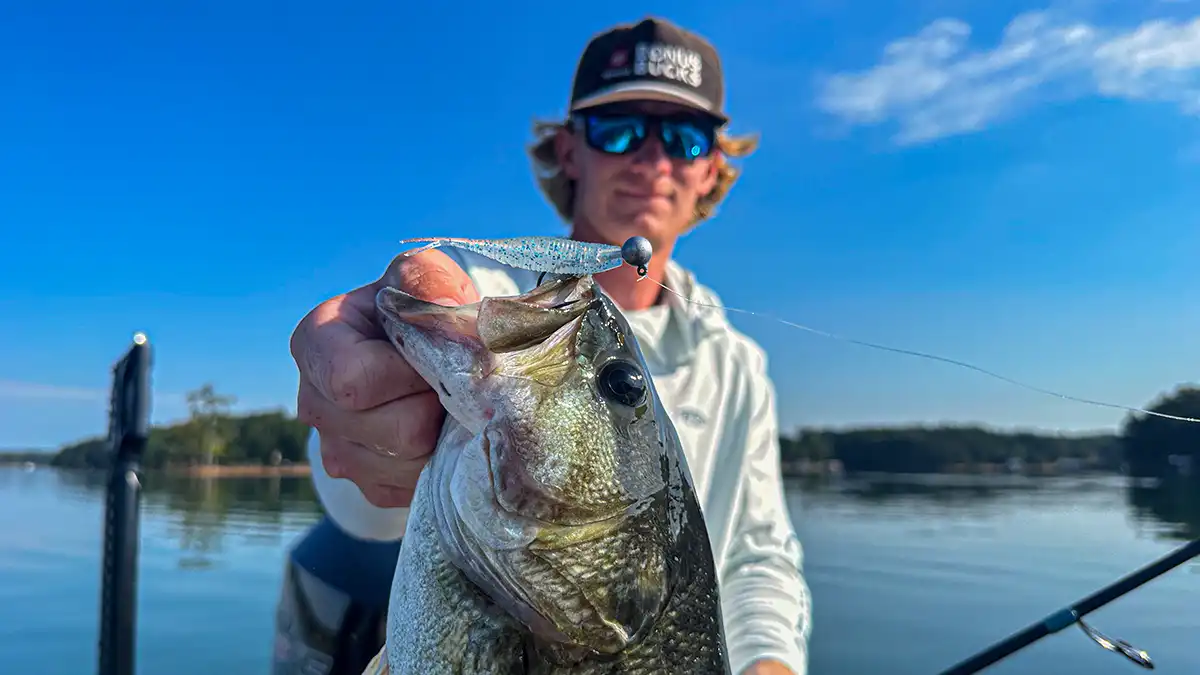I recently had the opportunity to fish a unique body of water I’ve always wanted to visit. I’d been to Lake Lanier once before this trip, however I didn’t have much knowledge of the fishery as I hadn’t spend any time there. Luckily, my good friend and full time guide Brooks Anderson invited me back for another trip. I first met Brooks through college fishing, however he’s since graduated and begun guiding on Lake Lanier as well as competing in numerous high-level tournaments.
Brooks grew up targeting spotted bass on Lake Lanier and Lake Hartwell, giving him extensive knowledge on how these fish act and operate. I made the trip down to Lanier in early August, and Brooks showed me a few different patterns that were generating some giant bites. We ended up catching numerous bass, with our best five weighing around 20 pounds. We used three different pattern to catch fish, each generating at least 2 or 3 sizable bass.
EARLY MORNING TOPWATER
We started off the day shallow, looking for wolf packs of spotted bass feeding on bait. We started by cruising major points, humps and bars on the main lake. We saw bass between 5 and 10 feet, all of which reacted well to a topwater. These groups would typically be between 3 and 30 fish, and the bites were often ferocious. The water on Lake Lanier is insanely clear, so its important to keep the fish from getting a good look at your bait. This is why retrieval speed becomes exceptionally important.
Books explained how the burn and stop method is great for triggering weary spotted bass, often only letting his bait sit for around a second. This generated numerous quality bites, most of which came on one specific bait. Brooks was using a Yamamoto D-Shad paired with a 4/0 worm hook and 10-pound CAST X12 braided fishing line. Brooks threw his fluke on a spinning rod, explaining how spinning gear paired with slick braided fishing line allows him to throw the bait much further, ultimately increasing his chances of getting bit.
POWER FISHING BRUSH
Once the sun got up, we transitioned to fishing deeper brush. I’ve done lots of brush pile fishing over the course of my life, however this was slightly different. We focused on brush located between 15 and 30 feet deep, with each brush pile often holding upwards of 50 bass. We fished these brush piles super fast, often only making a few casts. We had lots of followers practicing this technique, however we managed to put a few 4-plus pound fish in the boat doing it.
We rotated between several different baits for this technique, however the most successful was a jig and minnow-style bait. Brooks was using a 1/4-ounce Buckeye Lures G-Stroll Head paired with a Yamamoto Scope Shad. He would burn this bait over brush piles and schools of fish causing them to come up and compete over the bait. Brooks also caught fish by following up with the Yamamoto Sensei Worm rigged on a Neko rig. This strategy ended up generating numerous bites from fish over 3 pounds.
TARGETING DEEP TIMBER
Last but certainly not least, we ended the day targeting deep timber patches. We fished areas with timber that came up to 20 feet below the surface, looking for both individual fish and wolf packs cruising for bait. These fish were extremely moody however; it seemed they would either destroy your bait the second they saw it, or want nothing to do with it. It seemed the best way to get them to react is by hitting as many fish as possible as fast as possible. While most would just chase our bait, several 4-plus pound spotted bass ended up biting using this strategy.
We primary used the G-Stroll Jig Head paired with a Yamamoto Scope Shad for this technique. However I did play around with the Yamamoto Shad Shaped Worm and the Z-Man Scented Jerk Shadz. We also upped our jig head size from a 1/4 to a 3/8-ounce. This helped with efficiently hitting as many fish as possible using forward-facing sonar. We caught fish on all three of these baits, but our two biggest came on the Yamamoto Scope Shad and the Z-man Scented Jerk Shad.
I’ve always been infatuated with giant spotted bass, and I was thrilled to catch multiple giant spots during my day with Brooks. This was my first time sharing the boat with Brooks, and I can safely say I learned a ton about how spotted bass feed, act and operate. If your looking to catch more spotted bass this summer, I highly recommend booking a trip with Brooks Anderson Fishing or trying these three techniques out on your own. You won’t be disappointed.















